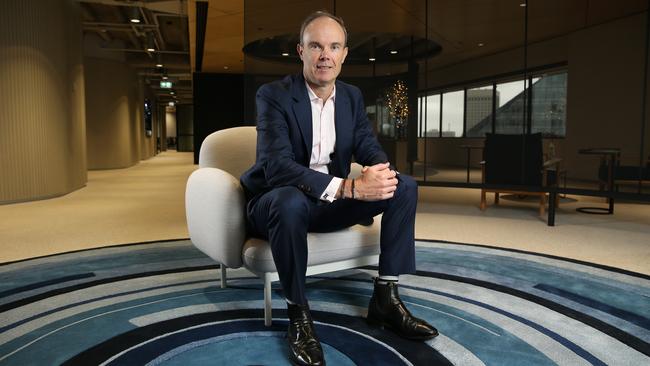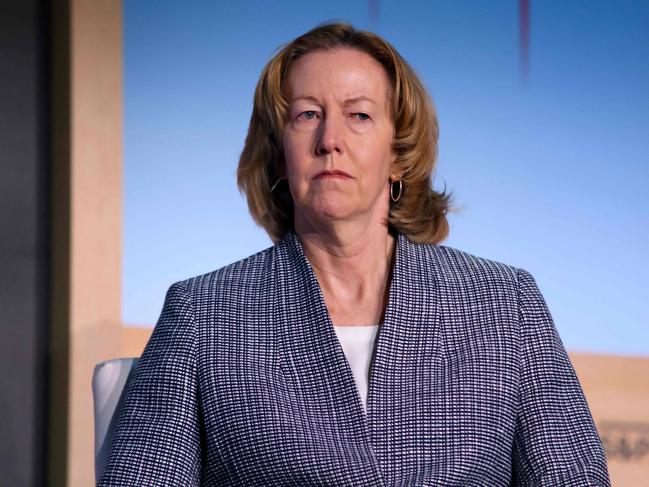Hamish Douglass dines out on Guzman y Gomez shares; Woodside’s naming dilemma

Call it the great Mexican sell-off of 2022. The burrito breakaway. The taquito toss-out. You remember what we’re talking about, don’t you? We’re harking all the way back to the much ballyhooed sale of Magellan’s 11.6 per cent stake in Guzman y Gomez to investment bank Barrenjoey.
Not a bad trade at the time. Two years prior, Magellan paid $86.8m for its GYG stake. We’re talking pre-Covid-19 pandemic, pre-share price dive, when co-founder and chairman Hamish Douglass still ran the joint. Hadn’t yet decamped from the firm.
By the time Magellan sold its GYG slice to Barrenjoey – under pressure from investors, apparently – its stake in the fast-food business had climbed to $140m, a tasty premium on the entry price but one that masked a grievous opportunity cost. GYG today has a market cap of roughly $4bn. It means Magellan’s 11.6 per cent – had Magellan retained its stake – could have been worth about $420m.
And here’s something we didn’t know: Magellan’s announcement at the time of the sale stipulated that the $140m sale proceeds would be seeded into a Barrenjoey investment trust comprised of “high-net-worth investors”. Now who on earth could they be?
We’ve just learned that one very significant unit holder in this trust was none other than Douglass himself, who confirmed to us that he remains a significant investor in both GYG and Magellan. So don’t be fooled by that selldown of two-thirds of his Magellan shares – about 7 per cent of the company – in November 2022.
“I am delighted to be a meaningful shareholder in both GYG and Magellan,” Douglass told us, in a rare public statement.
“GYG is an outstanding Australian success story and Magellan and its investment in Barrenjoey hold a special place in my heart. Barrenjoey, which was seeded by Magellan, is rapidly becoming one of Australia’s pre-eminent financial services firms.”
You can tell he still has friends on both sides!
Douglass’s entree as a unitholder in the Barrenjoey trust occurred after he’d stepped away from Magellan, on medical leave, in February 2022. The sale to Barrenjoey was announced in May of that year.
We can’t tell you precisely how much he holds in the trust, either (because he wouldn’t tell us), but clearly he and any other investors are reaping the spoils (to quote Michaelia Cash) of that $280m uplift – minus Barrenjoey’s 20 per cent performance fee. Need we point out that Barrenjoey’s sucker institutional customers would obviously love to see a tripling of their money; instead they’re writing cheques to save disasters like Star Entertainment, while co-executive chair Matthew Grounds rakes in $22m in advisory fees.
Magellan’s investors, meanwhile, aren’t seeing a dime. Think of what might have been!
Well, actually, that’s not entirely correct. The sale was supposed to return $6m to Magellan subject to performance and realisation of the investment by the trust. But you know, if you were to give Magellan’s investors, or anyone, a choice between a measly $6m or a very chunky slice of $280m … well, we know which one we’d be choosing. YB
What’s in a gulf name?
What’s in a name? A couple of billion dollars worth of oil platforms and a thorny little problem for Woodside Energy boss Meg O’Neill, as the company struggles to decide whether it’s operating in the Gulf of Mexico or the Gulf of America.
US President Donald Trump’s decision to rename the gulf forced US authorities into a hasty rewrite of the country’s maps. And it’s also causing headaches at Woodside.
The oil and gas giant is due to put out its annual report next week, and is running short of time to make a call on the tricky issue – which name should the company use?
Woodside spent up big in the US last year, betting $US1.2bn that Trump’s “drill, baby, drill” mantra would be a source of long-term growth. It also operates the Shenzi platform in the Gulf of Disputed Moniker, and has a share in another couple of oil wells run by BP.

So a pretty simple decision, you’d think, given the Trump administration is keeping keen eyes open for any signs of dissent – witness this week’s decision to exclude an Associated Press reporter from an Oval Office event because the wire service wouldn’t change its style guide to reflect Trump’s whimsy.
And, while Woodside’s newly acquired Louisiana LNG project is permitted and ready to be built, a ruckus with the government is the last thing you want when building something big and expensive.
Which is where Woodside’s problem lies. Its other major growth project is the $US7.2bn Trion project which, sadly for Woodside, is only partly built, sits in Mexican territorial waters, is regulated by the country’s authorities, and is co-owned by PEMEC – Mexico’s state-owned petroleum company.
Mexico, unsurprisingly, has a slightly different view about whether the gulf should retain its traditional name. Mexican President Claudia Sheinbaum laughed off Trump’s plans when they were first announced, but last week sent a stroppy letter to Google after the search and mapping giant announced plans to conform to Trump’s renaming exercise.
Margin Call hears the debate is still running inside Woodside, though we understand the tone is closer to irritation than anything else.
For the record, US oil and gas giant Chevron has already folded on the subject, referring exclusively to the Gulf of America in its most recent earnings report. Chevron has also updated its website to reflect the gulf’s new name. NE
Art’s dirty money
Woke or broke? That’s been the decision for many Australian arts bodies over the past few years as pressure came on to ditch sponsorship from fossil fuel producers.
But while plenty of headlines have been generated by the decisions of arts festivals and institutions to ditch sponsorship deals with the likes of Woodside and other big resources companies, what about that other important source of arts funding, charitable foundations?
Do they fund high-art from dividends paid by dirty fossil fuel companies? Surely just as bad as sponsorships.
Sadly, most of their investment decisions are cloaked behind trusts and managed investment funds, normally an impenetrable barrier to inquiring minds.
Except those of federally run bodies such as the National Gallery of Australia that are required to tell parliament when they buy and sell shares.
In this case it’s the Gordon Darling Australia Pacific Print Fund. Darling was BHP’s longest serving director, putting in a 32-year stint on the mining giant’s board until he retired in 1986. He was also the inaugural chairman the NGA’s board, and set up the fund to allow the NGA to buy contemporary prints from Australian and regional artists.
The trust, administered by the NGA, is worth about $4.7m, and its investments returned a healthy $262,000 last financial year.
But, as you’d expect from a fund established by a former BHP director (now overseen by NGA boss Nick Mitzevich), there’s no apparent reticence about investing in the resources sector.
The print fund was last seen offloading $62,000 worth of Commonwealth Bank shares at a respectable $158.80 – missed this week’s upswing, but you can’t win them all.
In turn, it bought $60,365 worth of Woodside shares and $100,000 worth of BHP stock. NE






To join the conversation, please log in. Don't have an account? Register
Join the conversation, you are commenting as Logout